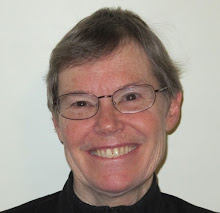One rug was made in 1942 (75 years ago!) and the second one in 1958. Pat was impressed by how well preserved they were, and I had fun pointing out various designs and telling Pat what those images meant to me. We probably spent almost two hours examining those rugs, and taking photographs. The rugs won't last forever, but the photographs can help preserve the stories of these unique rugs, hand-hooked by Sadie May Morse of Marblehead, Massachusetts.
I have already written about my memories of these rugs, and how they came to be made. (Type "hooked rug" in the search box of this blog to find previous postings and old photos.) Today my purpose is to share photographs of how the 75-year old rug looks now:
In the 1950's my father loved to play Tiddly Winks Golf on this rug. He usually placed a dictionary between the 2 ovals seen above, challenging us to play the "wink" from one oval to the other by jumping it OVER the book in one move, or playing it around the book. I showed Pat the set-up:
 |
| My parents loved to play ice hockey |
 |
| My mother loved horses; my father had a sail boat; and they lived in a tiny house (see above) |
Although this 75-year old hooked rug looks remarkably good in the photos above, I took additional photos to illustrate problem areas. This rug was constructed of wool strips hooked through a burlap backing. The aging burlap has disintegrated in places, especially along one line where the rolled-up rug had once been stored on a damp cement floor.
My mother attempted repairs, adding patches of denim fabric (recycled from old "dungarees") on the back side. She also was always very cautious when using a vacuum cleaner, not wanting to suck broken pieces of wool into the machine. Her preferred cleaning technique was to bring the rug outdoors and sweep fresh powder snow across the surface. The moist snow, when swept off, carried away the dust and dirt – a good gentle technique for surface cleaning.
Deeper cleaning would be a challenge, even when the rug was new. My mother often told the sad tale of the house painter who dropped a can of white paint onto this rug, and her frantic efforts to clean off the paint. She succeeded to some extent. As a child, I couldn't see evidence of that awful spill. But as I grew up and the rug worn down with heavy use, the old white paint embedded lower in the wool began to be revealed. See these photos:
White paint from a 1940's accident is visible.
On September 13, 2017, just days after I took these photographs, I happened to encounter an enthusiastic group of women hooking rugs. What a timely and welcome surprise! (I had traveled to Star Island in the Isles of Shoals for a 5-day retreat, and they were staying on Star island for a rug-hooking retreat.) I enjoyed watching them hook. I shared these photos (which were still on my cell phone) and learned that they call such rugs "Story rugs." An appropriate name! Many more stories to tell... I'll post photos of the second rug (made in 1958) on another day.
****************************************************************
 November 7, 2017 update.
November 7, 2017 update.I'm now adding photos of the 1958 rug, which was also hooked by Sadie May Morse. My mother was delighted that the SAME woman was still hooking rugs so many years later. We had moved into a larger house in 1957 and now had room for another rug. My mother commissioned one to match.
My initials (SMN) and my sister's (JCN) were designed into the corners, just as my parents' initials had been put in the corners of the 1942 rug.
In the photo, right, you can see an irregular patch just above my initials. A carpet cleaning company in 1995 washed this rug, without realizing how fragile the underlying burlap might be. A section broken apart and unravelled. They did their best to repair the problem before returning the rug to me. (It was my mistake to include this rug in with a batch of oriental rugs, which were all cleaned expertly. The company specialized in oriental rugs, and had NO experience with hooked rugs. Oops! That odd hand-sewn area is now just another story to tell; not a problem, really.)
The images in this rug were based on photographs and postcards from various family experiences, especially our six-week car-camping trip across the U.S. in summer 1958. I think the airplane signifies my parents' 1954 trip to Switzerland; for my mother, who had so admired Amelia Earhart, the act of flying across the Atlantic in 1954 was an unexpected treat and adventure. The rug contains a few Swiss scenes (e.g., skiing) and emblems.
 |
| Our new house at 121 Nichols St, Danvers |
And many, many scenes from our western trip, in which we visited great dams, and a dinosaur park. Also included was the quatrefoil symbol of our church in Salem, and the fancy yacht "Pelican" which belonged to one of my parents' friends in that church. My parents crewed for them on the "Pelican" and enjoyed wonderful trips around Nova Scotia. (Meanwhile, my sister and I were left with our cousin Annijay and her family in Maine, where we had a marvelous time.)
This story rug triggers so many memories, each of which could probably fill separate blog posts, someday.
















